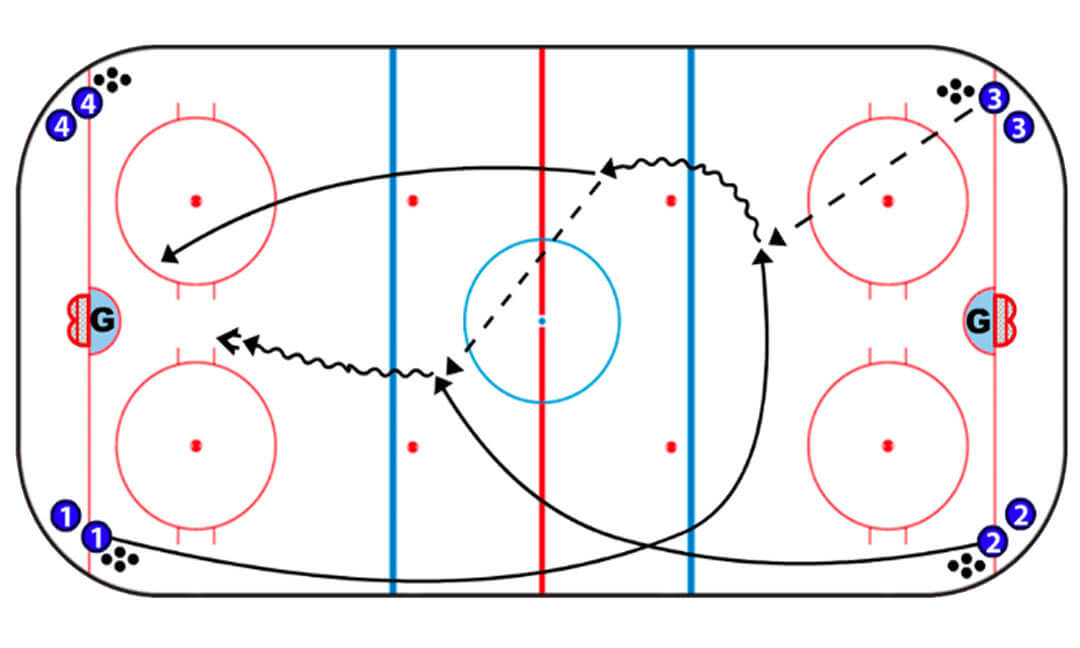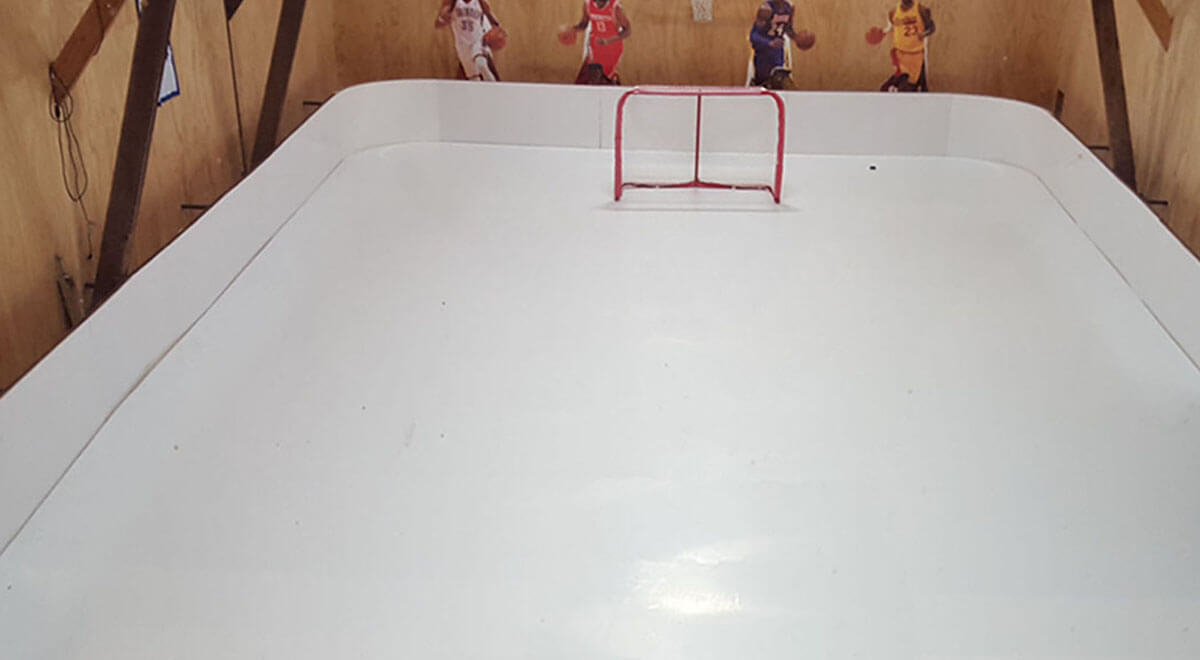Synthetic Ice Tips: Can Synthetic Ice Get Wet?
So you've been thinking about building your ice rink?
After building backyard ice rinks and being involved in the synthetic ice industry for years, we can tell you it's a labor of love.
It's also why we have started and continue to grow PolyGlide Ice.
Synthetic ice brings convenience to you without the expense, hassle, and pressure of creating natural ice rinks.
People are surprised when they see the tiles and panels for the first time.
Can you use actual ice skates to skate?
Can synthetic ice get wet?
Should you keep them indoors in a dry spot so that they last?
Skaters are surprised that synthetic ice can withstand water (including rain), snow, and heat.
However, understanding the mechanics of the product and how to care for it is all you need for hours of hockey, figure skating, or recreational fun.

Understanding synthetic ice
In a short time, synthetic ice has become quite popular with both skaters and hockey players.
In the last few years, the industry has seen tremendous growth when access to the ice rink has been limited.
Now, it's in garages, decks, and backyards across the country.
For the uninitiated, synthetic ice are panels that imitate actual ice.
The plastic ice can mimic the smoothness and hardness of an ice rink.
Synthetic ice panels were standard in large commercial rinks.
Now, panels are available in multiple sizes and shapes.
Each piece can connect like a puzzle to form a larger surface, similar to flooring you'd find in your local gym.
The surface itself requires a special slip agent to make it slippery.
There are two ways to make this happen:
- Infusion: We combine the synthetic ice and slip agent at the start of the manufaturing process. This allows the slip agent to permeate the entire sheet. Infused sheets provide an excellent experience without having to remember to apply a slip agent.
- Topically: The slip agent is applied directly on the surface as it's not infused during production. Instead, the skater will mix the agent with water and spray it on the surface before skating.
While non-infused ice is cheaper, it needs more time to maintain and has a steady supply of slip agents.
In both cases, the conditioner provides the conditions for the blades to grip while reducing friction.
Friction is a concern for synthetic ice as it's higher than natural ice.
However, the advancements in synthetic ice have reduced the coefficient of friction to less than 10%.
As a result, you can place your synthetic ice on any flat, hard surface and skate anywhere and any time of year.

How does moisture affect synthetic ice?
With some plastic materials, excess moisture can cause swelling or degrade it over time.
Not with synthetic ice.
The polyethylene material welcomes liquid to the surface.
The sip surface conditioner is an environmentally friendly compound that consists mainly of water.
So moisture from rain, a garden hose, or any other water source will not damage the tiles. There are some considerations:
- Of course, you don't want your synthetic ice covered in a pool of water. Your skates won't work well, and you increase the chance of rust or damage. Instead, use a mop or soft broom to remove the excess water before skating.
- Rainwater or a dusty day can cause dirt to mix with moisture and settle on the rink. Clean your rink before skating by using a soft mop or brush with warm water to scrub off dirt. For tougher stains, a light power washer can help clean larger rinks.
So Can You Skate on Wet Synthetic Ice?
Even if the water remains on your rink for several days, it will not change the performance of the rink or damage the panels.
A synthetic ice rink is durable and can last up to 10 years with recreational use or 5-7 years with heavy use.
So you should be fine if it's slightly wet when you're skating on it.
The biggest concern will be the longevity of your skates, which we will touch on shortly.

What About Other Conditions?
If you're building a big rink outside, you won't be worried about the rain.
All the elements come into play.
Another great advantage is that you can skate any time of the year.
If you're skating in warmer months, you'll be concerned about the heat affecting your tiles.
Heat can cause your tiles to expand but would not damage the tile or ruin your skate experience.
Most synthetic ice rinks are also UV protected, so you and your rink are safe in the sun.
And for snow?
It can work through freezing temperatures too.
If ice forms on your rink, you can get it off misting with hot water, as you would on a backyard rink made with water.
Depending on how big or small your rink is, you may want to figure out a homemade Zamboni method.
Water and Your Skates
Synthetic ice can get wet, so your skates can get wet too.
Keeping your rink wet can transfer that moisture to your blades.
If you aren't practicing proper blade care, it would seem that the synthetic ice is to blame.
Ice skates and their blades need consistent care to perform well and last long.
Make sure to dry your boot and blade with a microfiber cloth, then place the blades in soakers.
These will ensure your edges don't dull or rust out over time.
If you're concerned about your blade life, you can remove any excess moisture from your synthetic ice rink before skating.

Don't Sweat Over the Water on Your Ice Rink.
Synthetic ice can get wet and remain wet.
You can skate on it without drying it off first, and it may even improve the quality of your skating.
However, if it gets dirty due to the rain, you should clean the dirt first.
The high-quality polyethylene that makes up
PolyGlide's tiles and panels can withstand any weather.
Simply follow the care instructions, infuse your ice as necessary, and you'll have a synthetic ice rink that will last for years.
For more information on all our products or guidance on how to start your rink project, feel free to give us a call.
Let's create a skating experience you won't forget!

























